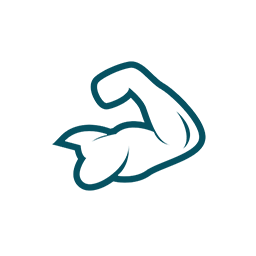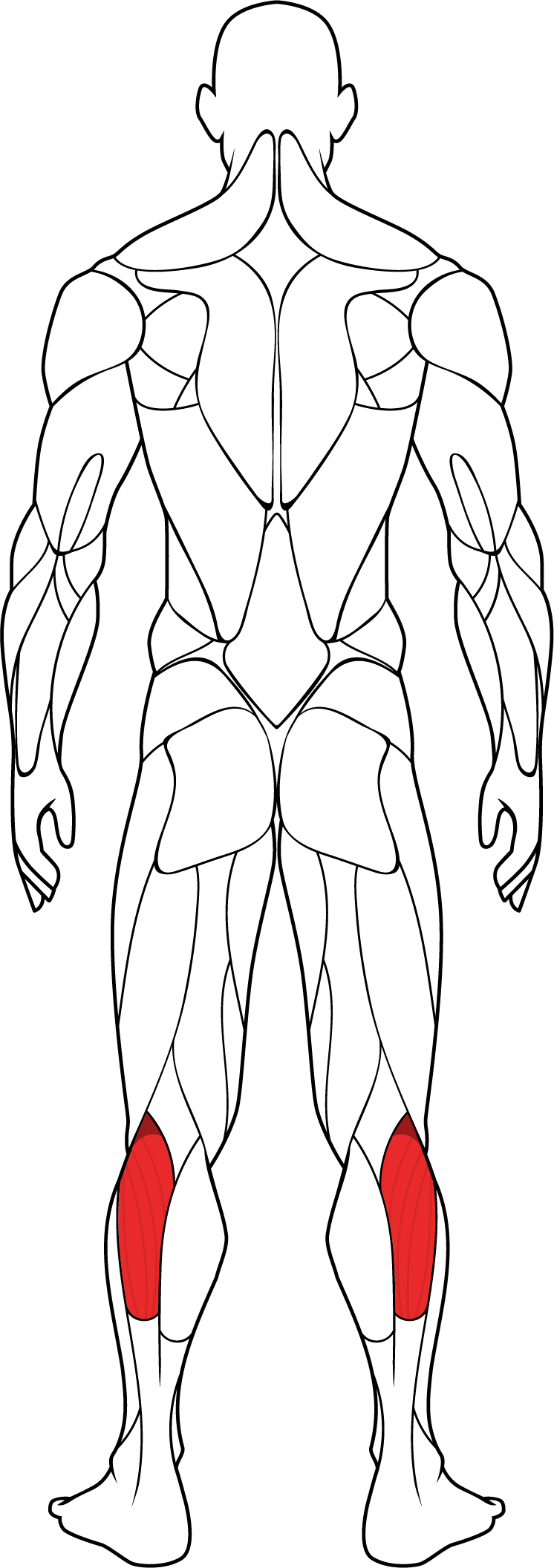The calves, short for the calf muscles, are located on the back of the lower leg. They consist of two primary muscles: the gastrocnemius and the soleus. These muscles play a crucial role in various movements of the ankle joint, including plantar flexion (pointing the foot downward) and stabilization during activities such as walking, running, and jumping.
The calves, short for the calf muscles, are located on the back of the lower leg. They consist of two primary muscles: the gastrocnemius and the soleus. These muscles play a crucial role in various movements of the ankle joint, including plantar flexion (pointing the foot downward) and stabilization during activities such as walking, running, and jumping.
Gastrocnemius: The gastrocnemius is the larger and more superficial of the two calf muscles. It originates from the medial and lateral condyles of the femur (the two bony prominences at the bottom of the thigh bone) and inserts into the Achilles tendon, which attaches to the heel bone (calcaneus). The gastrocnemius muscle crosses both the knee and ankle joints and is primarily responsible for plantar flexion of the ankle, as well as assisting in knee flexion.
Soleus: The soleus is a deeper muscle located beneath the gastrocnemius. It originates from the posterior surfaces of the tibia (shinbone) and fibula (the smaller bone of the lower leg), as well as the interosseous membrane (a sheet of connective tissue between the two bones). The soleus muscle inserts into the Achilles tendon and, like the gastrocnemius, is involved in plantar flexion of the ankle. Unlike the gastrocnemius, the soleus muscle does not cross the knee joint and is primarily responsible for plantar flexion when the knee is bent.
Functions of the calf muscles include:
Plantar Flexion: The primary function of the calf muscles is to produce plantar flexion of the ankle joint, which involves pointing the foot downward. Plantar flexion is essential for activities such as walking, running, jumping, and standing on tiptoe.
Stabilization: The calf muscles play a crucial role in stabilizing the ankle joint during weight-bearing activities. They help maintain balance and control, particularly when the body is moving forward or upward.
Shock Absorption: The calf muscles also contribute to absorbing and dissipating the forces generated during impact activities such as running and jumping. They help cushion the landing and reduce stress on the ankle and lower leg.
Strengthening the calf muscles is important for improving lower body strength, power, and athletic performance, as well as reducing the risk of injury. Some common exercises that target the calves include:
Calf Raises: Calf raises are performed by standing with the balls of the feet on a raised surface (such as a step or block) and lifting the heels as high as possible, then lowering them back down. This exercise primarily targets the gastrocnemius muscle.
Seated Calf Raises: Seated calf raises are performed using a seated calf raise machine or a bench. They involve sitting with the knees bent and placing the balls of the feet on a raised platform, then lifting the heels as high as possible, then lowering them back down. This exercise primarily targets the soleus muscle.
Jump Rope: Jumping rope is a dynamic exercise that engages the calf muscles as well as other lower body muscles. It involves jumping on the balls of the feet while swinging a jump rope in a circular motion.
Box Jumps: Box jumps are plyometric exercises that involve jumping onto a raised platform or box from a standing position. This exercise requires explosive power from the calves and other lower body muscles.
Sprinting: Sprinting is a high-intensity exercise that heavily engages the calf muscles, particularly during the push-off phase of each stride.
Incorporating a variety of these exercises into your workout routine can help develop strong, well-defined calf muscles, improve lower body strength and power, and enhance overall athletic performance. As with any exercise program, it's essential to perform movements with proper form and technique to maximize effectiveness and minimize the risk of injury. If you're new to strength training or have any concerns, consider working with a qualified fitness professional to develop a safe and effective workout plan tailored to your goals and fitness level.
Gastrocnemius: The gastrocnemius is the larger and more superficial of the two calf muscles. It originates from the medial and lateral condyles of the femur (the two bony prominences at the bottom of the thigh bone) and inserts into the Achilles tendon, which attaches to the heel bone (calcaneus). The gastrocnemius muscle crosses both the knee and ankle joints and is primarily responsible for plantar flexion of the ankle, as well as assisting in knee flexion.
Soleus: The soleus is a deeper muscle located beneath the gastrocnemius. It originates from the posterior surfaces of the tibia (shinbone) and fibula (the smaller bone of the lower leg), as well as the interosseous membrane (a sheet of connective tissue between the two bones). The soleus muscle inserts into the Achilles tendon and, like the gastrocnemius, is involved in plantar flexion of the ankle. Unlike the gastrocnemius, the soleus muscle does not cross the knee joint and is primarily responsible for plantar flexion when the knee is bent.
Functions of the calf muscles include:
Plantar Flexion: The primary function of the calf muscles is to produce plantar flexion of the ankle joint, which involves pointing the foot downward. Plantar flexion is essential for activities such as walking, running, jumping, and standing on tiptoe.
Stabilization: The calf muscles play a crucial role in stabilizing the ankle joint during weight-bearing activities. They help maintain balance and control, particularly when the body is moving forward or upward.
Shock Absorption: The calf muscles also contribute to absorbing and dissipating the forces generated during impact activities such as running and jumping. They help cushion the landing and reduce stress on the ankle and lower leg.
Strengthening the calf muscles is important for improving lower body strength, power, and athletic performance, as well as reducing the risk of injury. Some common exercises that target the calves include:
Calf Raises: Calf raises are performed by standing with the balls of the feet on a raised surface (such as a step or block) and lifting the heels as high as possible, then lowering them back down. This exercise primarily targets the gastrocnemius muscle.
Seated Calf Raises: Seated calf raises are performed using a seated calf raise machine or a bench. They involve sitting with the knees bent and placing the balls of the feet on a raised platform, then lifting the heels as high as possible, then lowering them back down. This exercise primarily targets the soleus muscle.
Jump Rope: Jumping rope is a dynamic exercise that engages the calf muscles as well as other lower body muscles. It involves jumping on the balls of the feet while swinging a jump rope in a circular motion.
Box Jumps: Box jumps are plyometric exercises that involve jumping onto a raised platform or box from a standing position. This exercise requires explosive power from the calves and other lower body muscles.
Sprinting: Sprinting is a high-intensity exercise that heavily engages the calf muscles, particularly during the push-off phase of each stride.
Incorporating a variety of these exercises into your workout routine can help develop strong, well-defined calf muscles, improve lower body strength and power, and enhance overall athletic performance. As with any exercise program, it's essential to perform movements with proper form and technique to maximize effectiveness and minimize the risk of injury. If you're new to strength training or have any concerns, consider working with a qualified fitness professional to develop a safe and effective workout plan tailored to your goals and fitness level.


